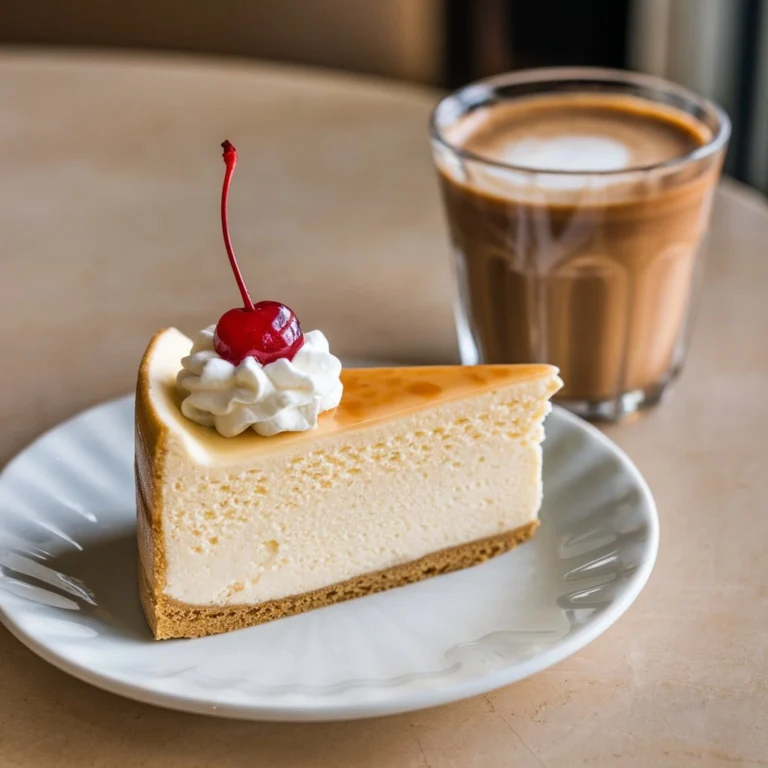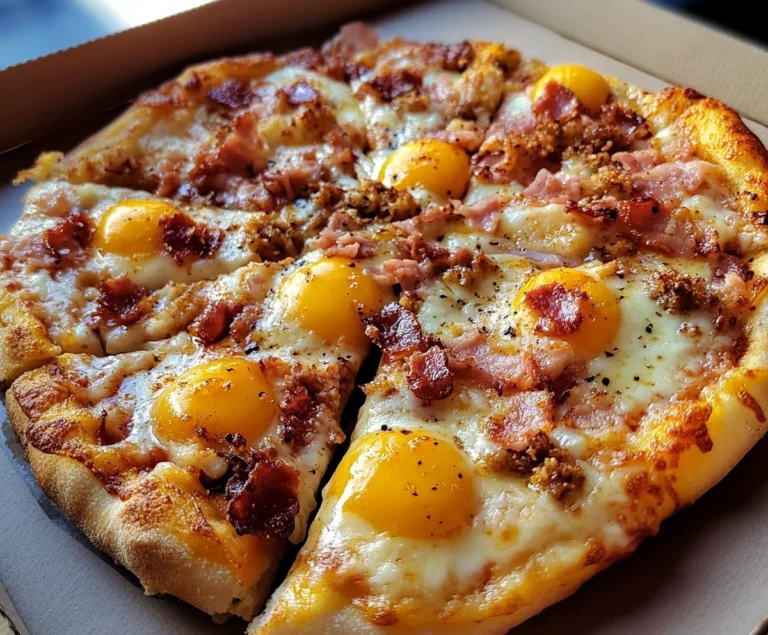What Should Brownie Batter Be?
What Should Brownie Batter Be? A Complete Guide to Consistency, Fixes, and Expert Tips
Achieving the perfect brownie begins with mastering the brownie batter. From the type of ingredients used to the consistency of the batter, every step plays a crucial role in determining the outcome. Whether you prefer your brownies fudgy, cakey, or somewhere in between, understanding how the batter should look and feel can significantly improve your baking skills.
In this comprehensive guide, we’ll explore what brownie batter should look like, common problems that bakers encounter, how to fix them, and some expert tips to help you craft the best brownies every time. Additionally, we will dive deep into different types of brownies and how the batter’s texture and consistency affect the final product. This article will provide you with everything you need to know about brownie batter, ensuring perfect results every time.
What Should Brownie Batter Look Like?
The first step in achieving the perfect brownie is understanding what the batter should look like before baking. In most cases, brownie batter should be smooth, thick, and free of lumps. It should have a texture that is spreadable but not so thin that it pours like cake batter.
The key to successful brownies lies in the consistency of the batter. It should be thick enough to require the use of a spatula to spread it evenly in your baking pan. However, the batter should also be soft enough to move and settle into the pan smoothly.
Key Signs of Perfect Brownie Batter:
- Glossy and smooth appearance: A well-mixed batter will have a glossy sheen to it, thanks to the combination of fat (butter or oil) and sugar.
- Thick but spreadable texture: The batter should be thick enough that it holds its shape but soft enough to spread easily with a spatula.
- No lumps: Lumps are a sign of improperly mixed dry ingredients, particularly flour or cocoa powder.
The Role of Ingredients in Brownie Batter Consistency
The ingredients used in brownie batter play a significant role in determining its texture and consistency. Different ingredients contribute in various ways to the thickness, smoothness, and ultimate flavor of the brownies.
1. Flour
Flour is one of the most important ingredients when it comes to the structure of your brownies. It provides the foundation of the batter, giving it its body and texture. The more flour you add, the thicker and more structured the batter will become. However, too much flour can make brownies dry and crumbly, which is why it’s essential to measure accurately. A proper balance ensures your batter is just thick enough.
Expert Tip: To ensure your flour is incorporated smoothly into the batter, sift it before mixing. Sifting helps eliminate lumps and allows for even mixing with the wet ingredients.
2. Sugar
Sugar not only sweetens the batter but also contributes to the overall texture. When sugar dissolves in the fat (butter or oil), it creates a smooth texture. Sugar also contributes to the shiny, crackly top layer that is a hallmark of many brownies.
The amount of sugar directly affects the moisture level in the batter. Using too little sugar can result in a dry, grainy texture, while too much sugar can make the batter overly sticky and gooey.
3. Butter or Oil
Butter and oil provide the necessary moisture to bind the ingredients together and prevent the batter from becoming too dry. Butter adds flavor and richness, while oil often results in moister brownies. If you prefer a richer flavor, butter is the ideal choice. If you’re looking for a softer, moister brownie, using oil is the way to go.
Pro Tip: You can use a combination of both butter and oil to get the best of both worlds—a rich flavor with added moisture.
4. Eggs
Eggs are critical for binding the ingredients and providing structure to the brownies. More eggs result in a cakier texture, while fewer eggs give a denser, fudgier texture. Eggs also contribute to the rise of the brownies, helping them to puff slightly as they bake.
Baker’s Note: Use room-temperature eggs for the best results, as they blend more easily with other ingredients and help achieve a smoother batter.
5. Cocoa Powder vs. Melted Chocolate
Whether you use cocoa powder or melted chocolate can significantly affect your batter’s consistency. Cocoa powder produces a thicker batter and leads to fudgier brownies, while melted chocolate creates a smoother, more luxurious texture. Both ingredients contribute rich chocolate flavor, but they behave differently in the batter.
Insider Tip: Try combining both cocoa powder and melted chocolate in your batter for an extra-decadent brownie with rich chocolate flavor and perfect texture.
Common Brownie Batter Problems and How to Fix Them
Even experienced bakers can run into problems when making brownies. Here are some common issues you might encounter and how to resolve them to ensure your brownies turn out perfectly every time.
1. Why Is My Brownie Batter Too Thick?
If your brownie batter is too thick, it could be due to several reasons. Common causes include using too much flour, not enough liquid, or overmixing the ingredients. Overmixing can cause the batter to stiffen as the gluten in the flour develops, resulting in a thicker texture.
How to Fix Thick Brownie Batter:
- Add a tablespoon of milk, water, or oil to thin out the batter gradually.
- Check your flour measurements. Adding a little less flour next time may help achieve a more balanced consistency.
- Avoid overmixing the batter. Mix just until the ingredients are combined.
For tips on achieving the perfect batter texture for baked goods, check out this comprehensive Mini Cupcake Recipes Guide.
2. Why Is My Brownie Batter Too Thin?
Thin or runny brownie batter often occurs when there is too much liquid or not enough flour. Runny batter can lead to under-baked, mushy brownies that don’t hold their shape.
How to Fix Thin Brownie Batter:
- Add an extra tablespoon of flour or cocoa powder to thicken the batter without affecting the flavor.
- Double-check your liquid ingredient measurements (oil, water, or eggs) to ensure they aren’t over-portioning.
- Make sure to mix the batter thoroughly to ensure all dry ingredients are incorporated, which can prevent runny spots.
Fudgy vs. Cakey Brownies: Understanding the Differences
Brownies can fall into one of two main categories—fudgy or cakey. The difference in texture comes down to the ratio of wet to dry ingredients, as well as how much you mix the batter.
1. Fudgy Brownies
Fudgy brownies have a dense, moist texture that almost melts in your mouth. These brownies typically contain more fat (butter or oil) and less flour. Fudgy brownies are all about achieving that rich, decadent taste with a gooey, chocolatey interior.
Key Characteristics of Fudgy Brownies:
- Dense and moist texture
- Thin, crackly top layer
- Rich chocolate flavor
To achieve fudgy brownies:
- Use a higher ratio of fat (butter or oil) and chocolate.
- Use fewer eggs and less flour than you would for cakey brownies.
- Mix the batter until just combined to avoid incorporating too much air.
For an even more decadent twist on fudgy brownies, try this delightful Banana Brownie Recipe that combines the richness of chocolate with the natural sweetness of bananas.
2. Cakey Brownies
Cakey brownies are lighter, fluffier, and more similar to a traditional chocolate cake. These brownies contain more flour and use a leavening agent like baking powder to help them rise. The result is a lighter, airier texture that contrasts with the dense, fudgy style.
Key Characteristics of Cakey Brownies:
- Light and fluffy texture
- More structured and less gooey
- Higher rise with a slightly drier crumb
To achieve cakey brownies:
- Use more flour and include a leavening agent like baking powder.
- Incorporate more eggs, which help give the brownies lift and structure.
- Beat the eggs and sugar longer to incorporate more air, resulting in a lighter batter.
How to Achieve the Right Consistency for Perfect Brownies
Achieving the right consistency in your brownie batter is crucial for getting the desired texture in the final product. Here are some tips to help you master the art of mixing brownie batter to achieve either a fudgy or cakey texture, depending on your preference.
1. Accurately Measure Ingredients
The key to perfect brownies starts with precise measurements. Using too much or too little of any ingredient can drastically alter the texture of your brownies.
- When measuring flour, use the spoon and level method: Spoon the flour into the measuring cup and level it off with a flat edge.
- For liquids like oil or milk, use a liquid measuring cup to ensure accuracy.
- Avoid packing down brown sugar unless the recipe calls for it, as too much sugar can make the batter sticky.
2. Use Room Temperature Ingredients
Using ingredients at room temperature ensures that they blend more easily and create a smoother batter. Room temperature eggs and butter, in particular, mix better and help achieve a more uniform texture.
- Let your eggs, butter, or milk sit out for at least 30 minutes before using.
- If you’re short on time, you can place cold eggs in a bowl of warm water for about 5 minutes to bring them to room temperature quickly.
3. Mixing Techniques
How you mix your brownie batter can also affect its consistency and texture. Overmixing can lead to tough, dense brownies, while undermixing can result in a lumpy, uneven batter.
- For fudgy brownies, mix just until the ingredients are combined. Overmixing introduces too much air into the batter, leading to a cakier texture.
- For cakey brownies, you can afford to mix a bit longer, as incorporating air helps achieve the lighter, fluffier texture characteristic of this type of brownie.
Can You Make Brownie Batter Edible?
Brownie batter is delicious, but traditional recipes include raw eggs and uncooked flour, which carry risks of foodborne illness. However, you can make edible brownie batter that’s safe to eat raw by making a few simple adjustments.
How to Make Edible Brownie Batter:
- Skip the Eggs: Eggs are a source of bacteria such as Salmonella. Substitute them with an egg replacer like yogurt, mashed banana, or a flaxseed mixture.
- Heat-Treat the Flour: Raw flour can also carry harmful bacteria. To make it safe, spread the flour on a baking sheet and bake it at 350°F for about 5 minutes, or until it reaches 160°F. Let it cool before using it in your batter.
- Add Extra Flavor: Without eggs, the texture might be slightly different, so consider adding more vanilla extract or a splash of milk to adjust the consistency.
For an easy recipe, check out this Edible Brownie Batter Recipe for a safe way to enjoy raw brownie batter.
Expert Tips for Making Perfect Brownie Batter
Baking brownies may seem simple, but there are a few key tips and tricks that can elevate your brownies from good to great. These expert suggestions will help ensure you get the best results every time.
1. Preheat Your Oven Properly
Always preheat your oven before baking brownies. An oven that hasn’t reached the right temperature can cause uneven baking, leading to brownies that are too dry or undercooked in the middle.
- Use an oven thermometer to ensure your oven is at the correct temperature.
- Brownies typically bake best at 325°F or 350°F.
2. Grease and Line Your Baking Pan
Brownie batter is sticky, so greasing your pan thoroughly helps prevent sticking and ensures easy removal after baking. For an even easier cleanup, line your pan with parchment paper, leaving an overhang so you can lift the brownies out of the pan once they’ve cooled.
Bonus Tip: You can also use aluminum foil to line the pan, which makes it easier to remove the entire batch without damaging the brownies.
3. Use High-Quality Chocolate
If you’re using melted chocolate in your brownies, invest in high-quality chocolate. The better the chocolate, the richer and more flavorful your brownies will be. Cheap chocolate can result in a waxy or bitter taste.
- Choose chocolate with at least 60% cacao for a rich, intense chocolate flavor.
- If using cocoa powder, opt for a high-quality Dutch-processed cocoa powder for a smoother, more intense chocolate taste.
FAQs About Brownie Batter
– Can I refrigerate brownie batter?
Yes, you can refrigerate brownie batter for up to 24 hours before baking. Chilling the batter allows the flavors to develop and meld together, resulting in more flavorful brownies. However, be aware that the batter will thicken as it cools, so let it sit at room temperature for a few minutes before spreading it in the pan.
– Can I freeze brownie batter?
Yes, brownie batter can be frozen for up to 3 months. After mixing the batter, transfer it to an airtight container or wrap it tightly in plastic wrap. Thaw in the refrigerator overnight before baking.
– What happens if I overmix my brownie batter?
Overmixing can lead to tough, dense brownies, as it causes the gluten in the flour to overdevelop. For fudgy brownies, mix the batter just until the ingredients are combined to avoid incorporating too much air.
– Why does my brownie batter have lumps?
Lumpy batter is usually a result of not sifting the dry ingredients or failing to mix them thoroughly with the wet ingredients. To avoid lumps, sift your flour and cocoa powder before adding them to the batter, and mix gently but thoroughly.
Conclusion
Mastering the consistency of brownie batter is key to creating delicious, rich, and perfectly textured brownies. Whether you’re aiming for fudgy brownies with a gooey interior or cakey brownies with a light, fluffy texture, understanding how each ingredient impacts the batter can make all the difference.
By following the tips outlined in this guide—accurate measurements, proper mixing techniques, and choosing the right ingredients—you’ll be able to create smooth, lump-free brownie batter every time. With a little practice and attention to detail, you’ll be well on your way to making the perfect batch of brownies, whether for special occasions or simply as a delightful treat for yourself.
For more inspiration and delicious dessert recipes, check out the amazing options available at Aurelia Recipes, where you’ll find a treasure trove of ideas to enhance your baking adventures.






